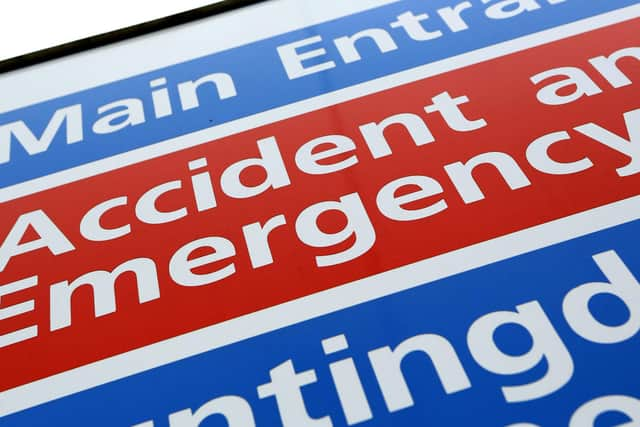More than three-quarters of A&E arrivals at Doncaster and Bassetlaw Teaching Hospitals Trust seen within four hours – meeting Government's recovery target
and live on Freeview channel 276
Last year, the Government announced a two-year plan to stabilise NHS services which set a recovery target of 76 per cent of patients being seen within four hours by March this year. The original NHS standard is 95%.
NHS England figures show there were 17,164 visits to A&E at Doncaster and Bassetlaw Teaching Hospitals NHS Foundation Trust in March. Of them, 13,062 were seen within four hours – accounting for 76 per cent of arrivals.
Advertisement
Hide AdAdvertisement
Hide AdIt means the trust met the recovery target but fell short of the NHS standard.


Across England, 74 per cent of patients were seen within four hours. It was an improvement from 71 per cent the month before, but the target was missed.
Figures also show 42,968 emergency admissions waited more than 12 hours in A&E departments from a decision to admit to actually being admitted – down from 44,417 in February.
The number waiting at least four hours from the decision to admit to admission rose slightly, from 139,458 in February to 140,181 in March.
Advertisement
Hide AdAdvertisement
Hide AdAt Doncaster and Bassetlaw Teaching Hospitals NHS Foundation Trust, 997 patients waited longer than four hours, including 174 who were delayed by more than 12 hours.
Sarah Scobie, Nuffield Trust acting director of research, said: "Despite the incentive scheme to improve A&E waits for this month, with the highest performing trusts being rewarded financially, progress has been limited and the long-term strategy for reducing waiting times is unclear.
"There were record high attendances to A&E in March, making it even more challenging for targets to be met, and while there was a slight fall in the proportion of people waiting longer than four hours, it’s concerning to see that the number stuck on trolleys for hours while they wait for a ward space to become available has not improved at all."
About 2.4 million people attended A&E departments across England last month – the busiest month ever and 9% higher than the number of attendances in March 2023.
Advertisement
Hide AdAdvertisement
Hide AdThe overall number of attendances to A&E at Doncaster and Bassetlaw Teaching Hospitals NHS Foundation Trust in March was a rise of six per cent on the 16,148 visits recorded during February, and eight per cent more than the 15,915 patients seen in March 2023.
Danielle Jefferies, senior analyst at the King's Fund, said: "As we approach the end of the winter period, it is possible to draw comparisons on how the NHS fared this season compared to last year.
"These latest statistics show that whilst winter pressures may not have dominated headlines as much as last year, the NHS is stuck in a cycle of poor performance."
NHS national medical director Professor Sir Stephen Powis said the latest health service performance data "demonstrates once again how the NHS is working flat out to recover services" despite "enormous demand".
Advertisement
Hide AdAdvertisement
Hide AdHe added "there is further to go" but "it is clear the NHS is treating more patients more quickly and we have announced new ambitions for this financial year to build on the improvements made so far".
Comment Guidelines
National World encourages reader discussion on our stories. User feedback, insights and back-and-forth exchanges add a rich layer of context to reporting. Please review our Community Guidelines before commenting.